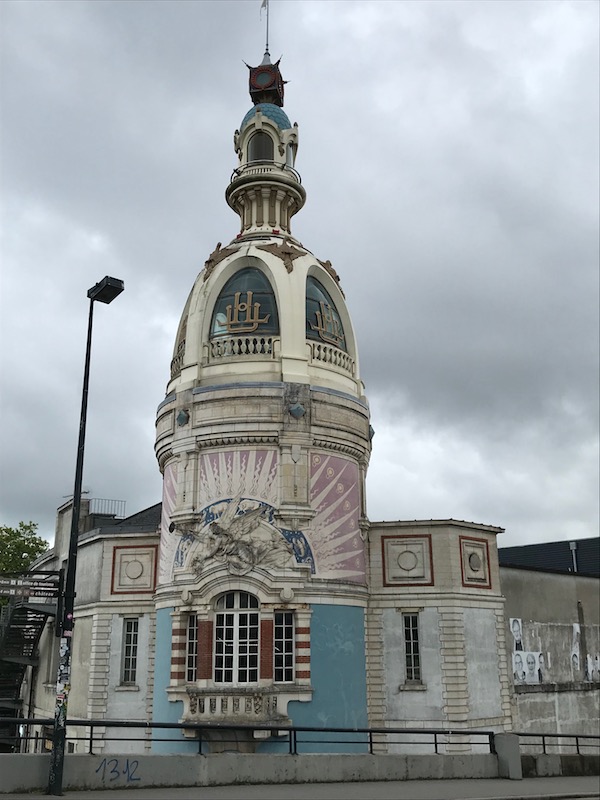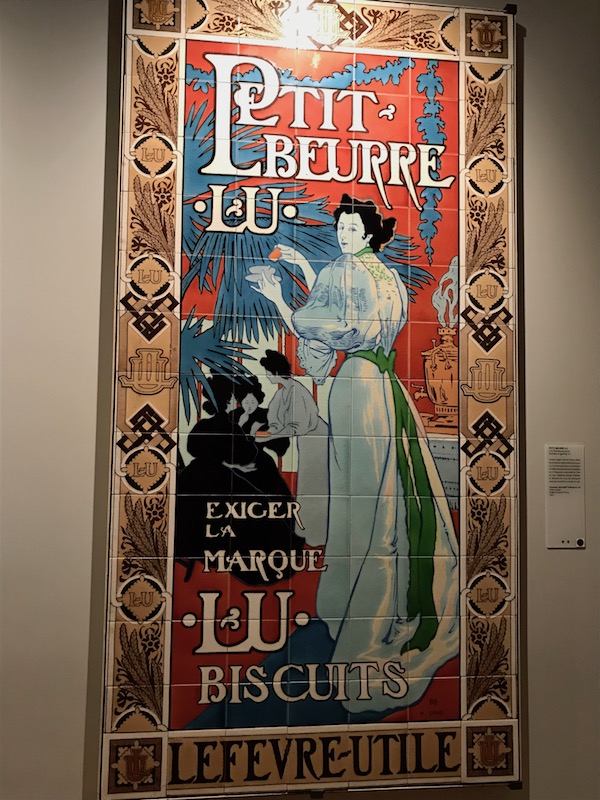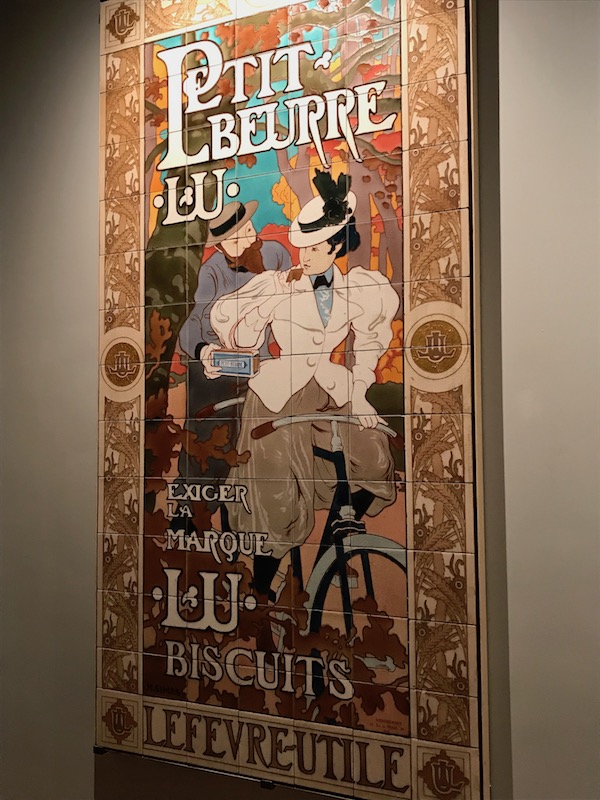Our Blog - Nantes, France
The writer Stendhal remarked of 19th-century Nantes, "I hadn't taken 20 steps before I recognized a great city." A lot has changed since then, but Nantes still has a bit of charm, even with its over 300,000 people making it the 6th most populous city in France. Dating back to Roman times, it was a important city throughout time, being the seat of a bishopric in the 5th century and a ducal capital in the 15th century before being integrated into the kingdom of France in the 16th century.
It was occupied by the Germany Army in 1940 and bombed heavily in 1943 with between 1000 and 1500 bombs hitting the town. In 1941, a German officer was shot here by the Resistance and the Nazis announced they would execute 50 hostages (otages in French), although in the end, they only killed 48. There is a monument that honors those 48 who died, and there is also a road called "Cours des 50-Otages".
One of France's last Gothic cathedrals, the construction of the Cathedral of St. Peter and St. Paul of Nantes was started in 1434. It was hit by bombs in June 1944 which led to restoration work. However, when it was almost done, a fire in the attic broke out due to the carelessness of a roofing worker welding a gutter. The wooden roof was replaced by a concrete structure and the restoration work was finally completed only in 2013. The last picture is a painting showing what the church looked like during the fire.


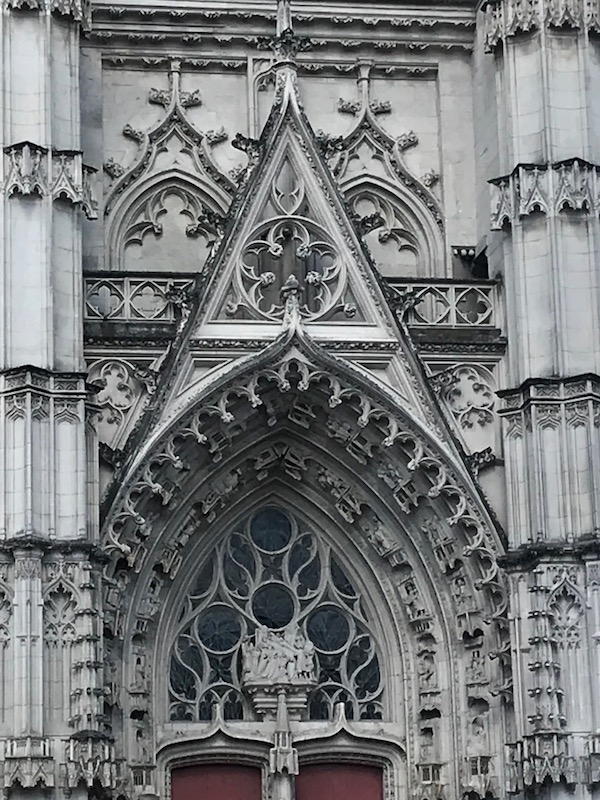
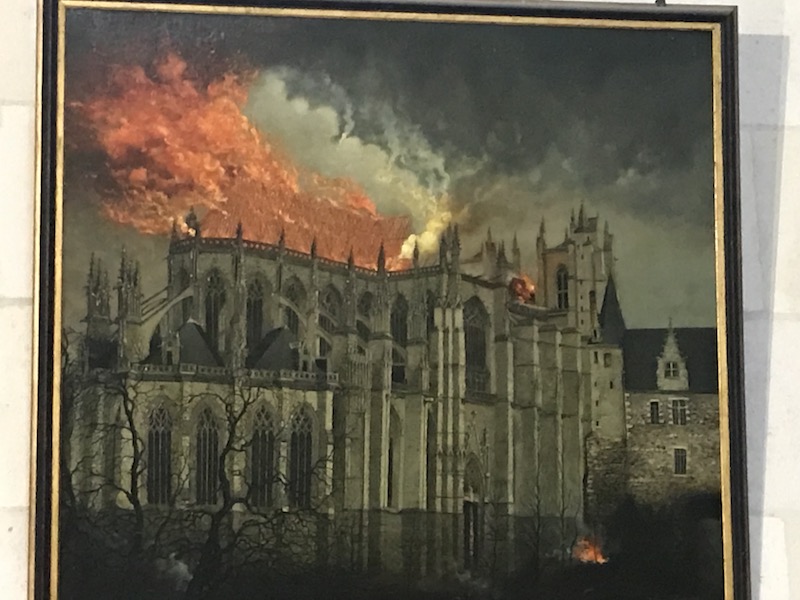
The design is just of a nave with aisles on either side, but with no transept. It is VERY tall ... the nave is actually taller than Notre Dame in Paris. There are quite a few very nice statues, most likely in such great shape because they were restored after the fire. I liked the holy water containers which are in the shape of shells that look like they are coming out of the rocks.


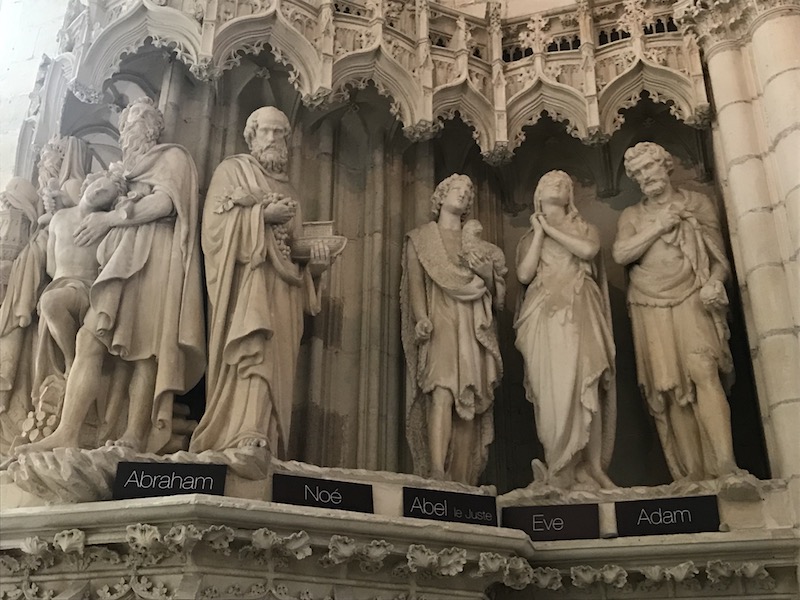
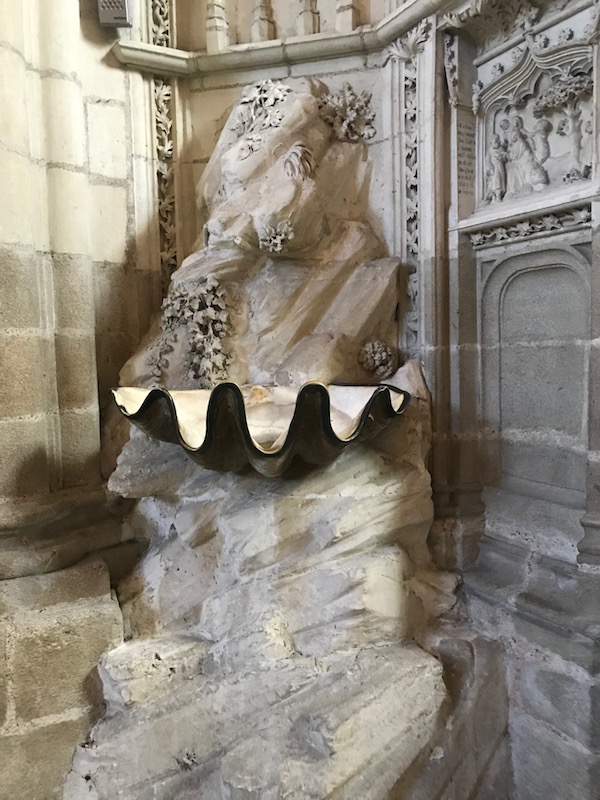
The Chapel of Saints Donatien and Rogatien, two brothers who were martyred around 290. What I wanted to show here was what happened during the Revolution, or more precisely, during "the Terror" when many religious artifacts were destroyed. Here you can see how people had broken and removed the carved niches that would have held religious statues.


The Chapel of Saint Clair has a white marble altar with the 4 Evangelists, each shown with their respective animal (John with the eagle, Mark with a lion, Matthew with a child, and Luke with a bull).
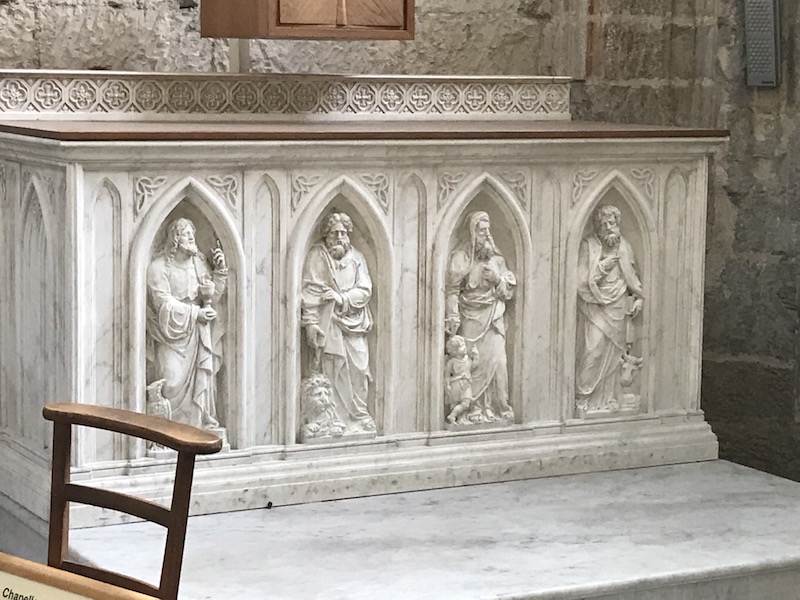
One of the most impressive things in the Cathedral is the tomb of François II of Bretagne and Marguerite of Foix. The tomb was commissioned by their daughter Anne, who was forced to marry King Charles VIII after their death, and who then married the new king of France, Louis XII after Charles died. The 4 corners show the cardinal virtues (Courage, Temperance, Justice, and Prudence). The last picture is one of the smaller statues around the bottom, this one being Charlemagne (also known as Charles the Great or Charles I.
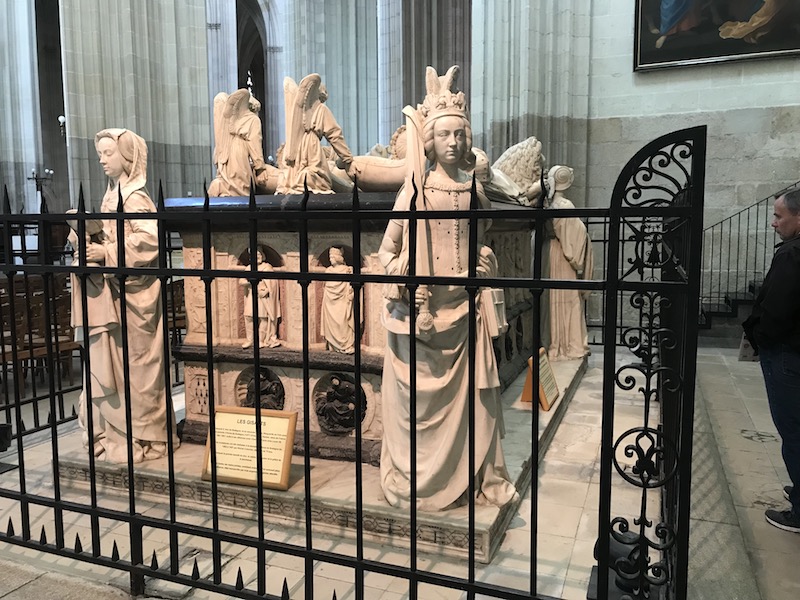
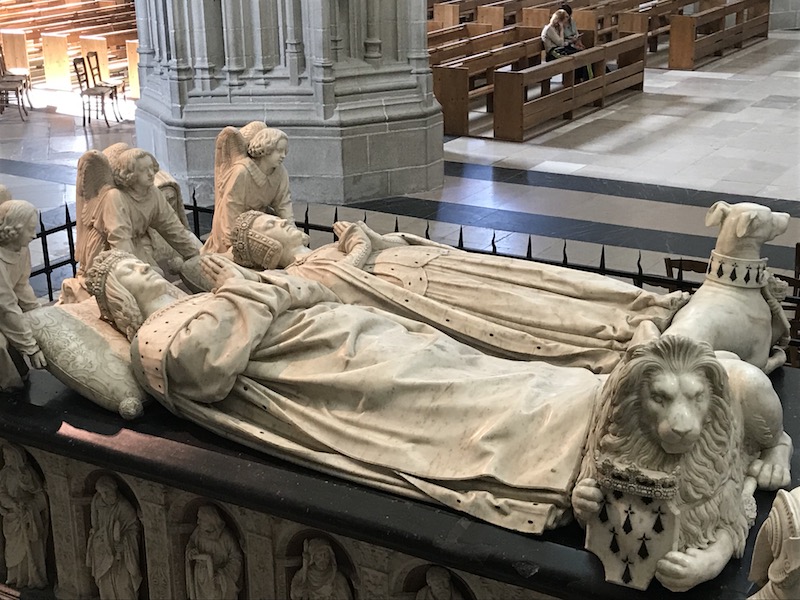
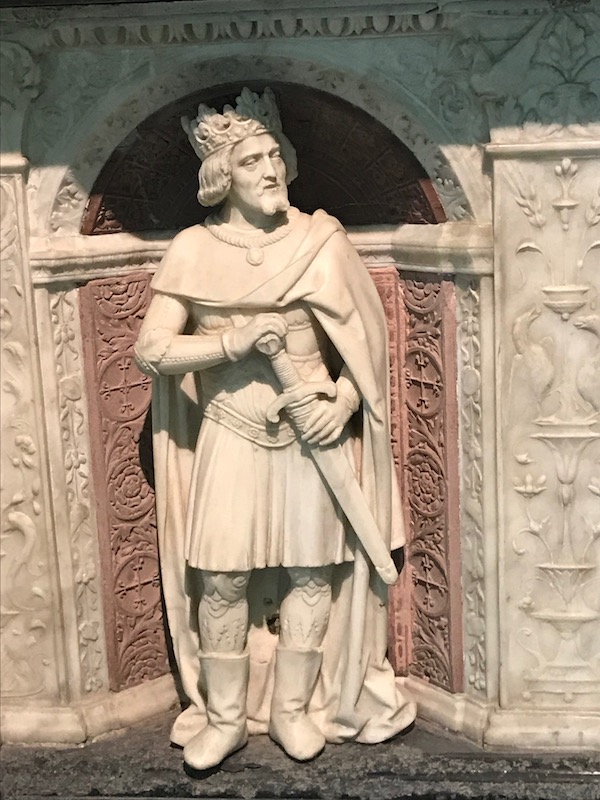
The stained glass windows are pretty recent (between 1978 and 1988), and quite modern.

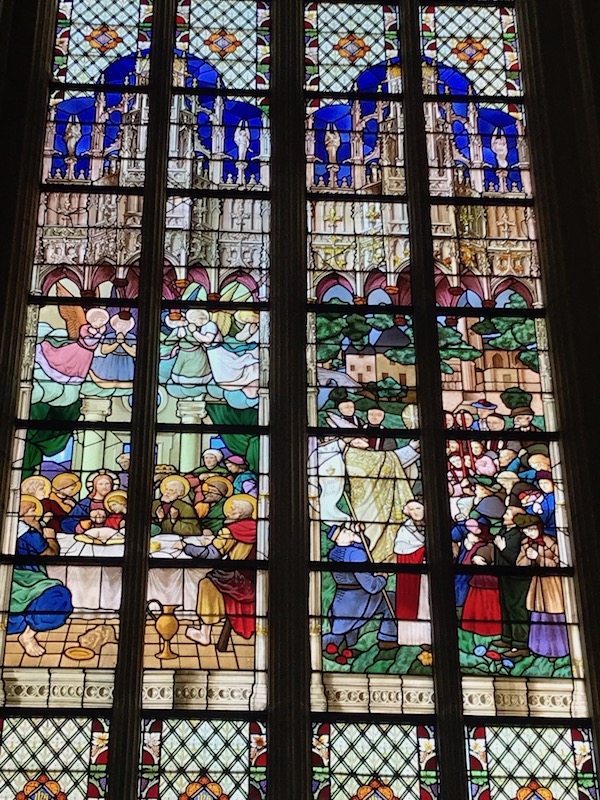
The is the cenotaph of General Lamoricière (so what looks like a tomb but isn't), erected in 1878. The bronze statues symbolize the 4 virtues: charity, wisdom, faith, and military courage.
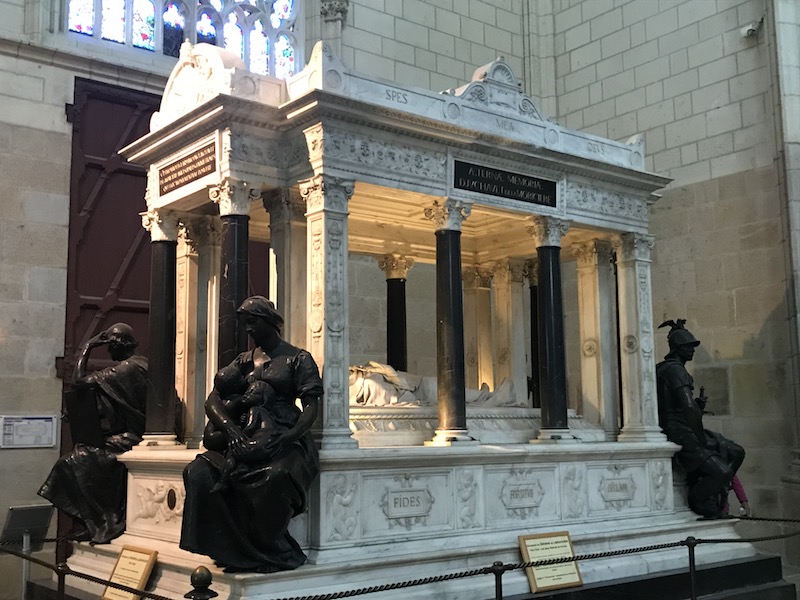
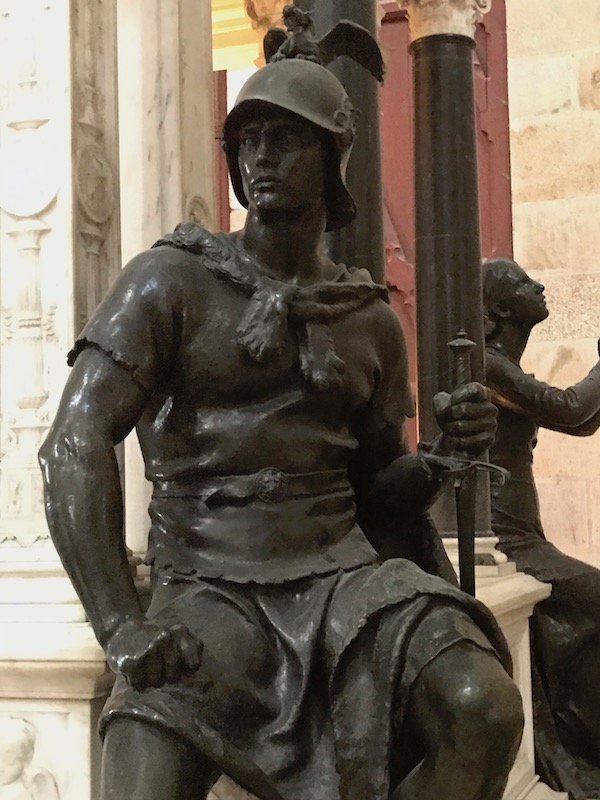
Basilique Saint-Nicolas was built in 1844 in the neo-Gothic style, the first church in France in this style. This is an odd church in that, due to the land, it was forced to be oriented on a north-south axis instead of an east-west access most Christian churches. It was badly damaged by Allied bombing in 1943 and the reconstruction lasted from 1953 to 1974.
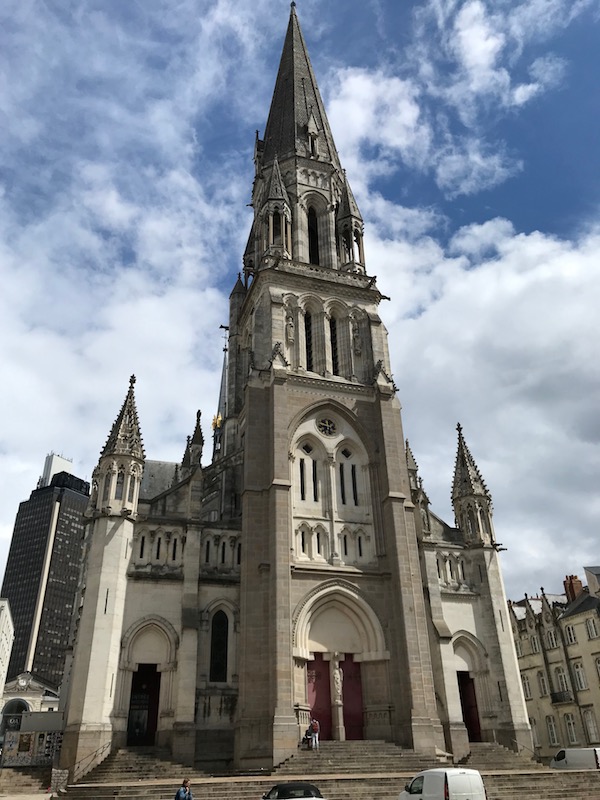
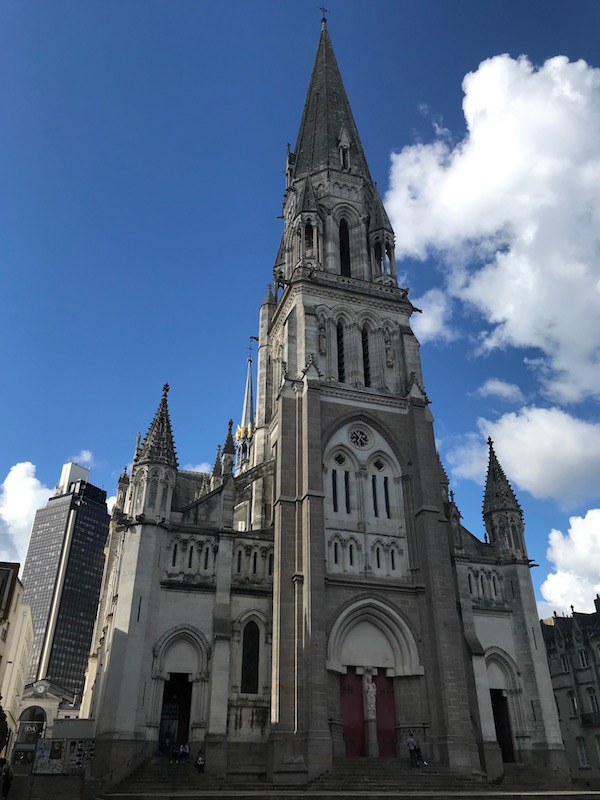
The interior has a tall nave with aisles on each side. You can see the gold color on the 2nd "floor" coming through the windows of the triforium (a gallery or arcade above the arches of the nave, choir, and transepts of a church).

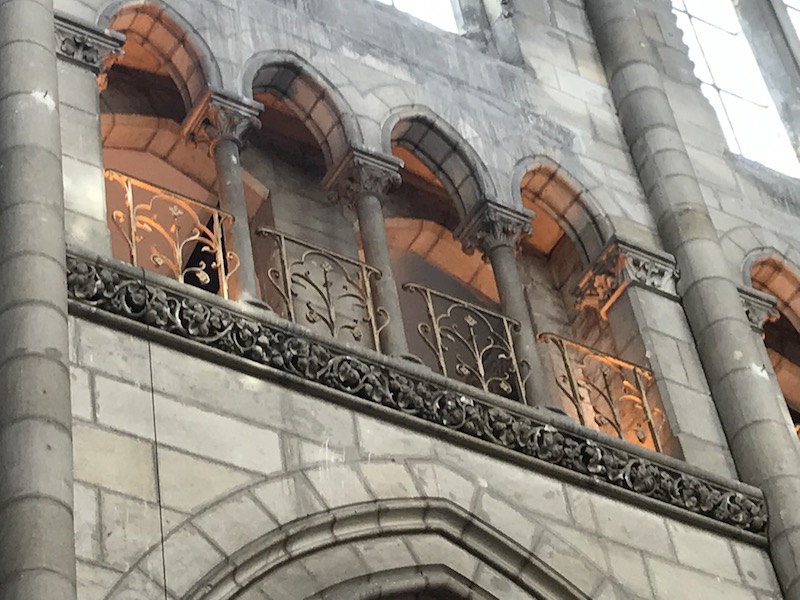
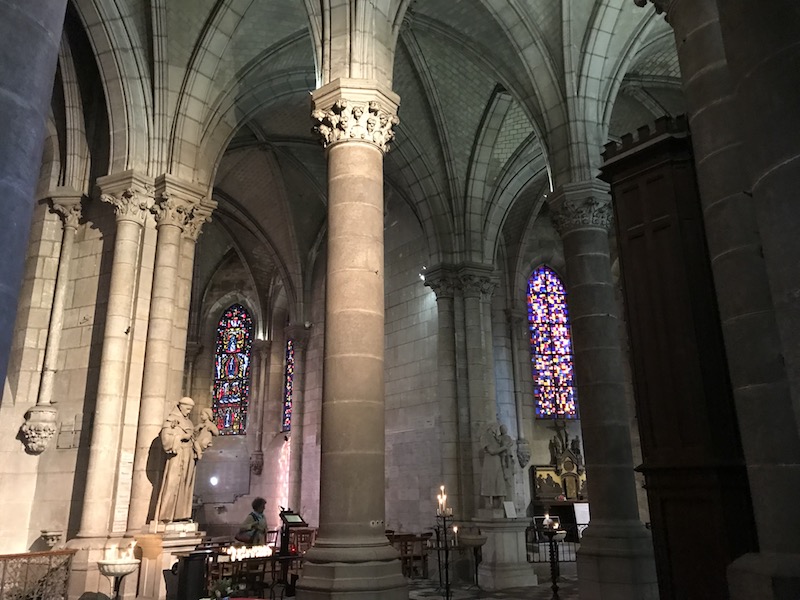
The stained glass in the choir features Saints Luke, Stephen, Paul, Peter, John, and John the Baptist. They were done in 1960 since none of the original stained glass lasted through the bombings of WW II.
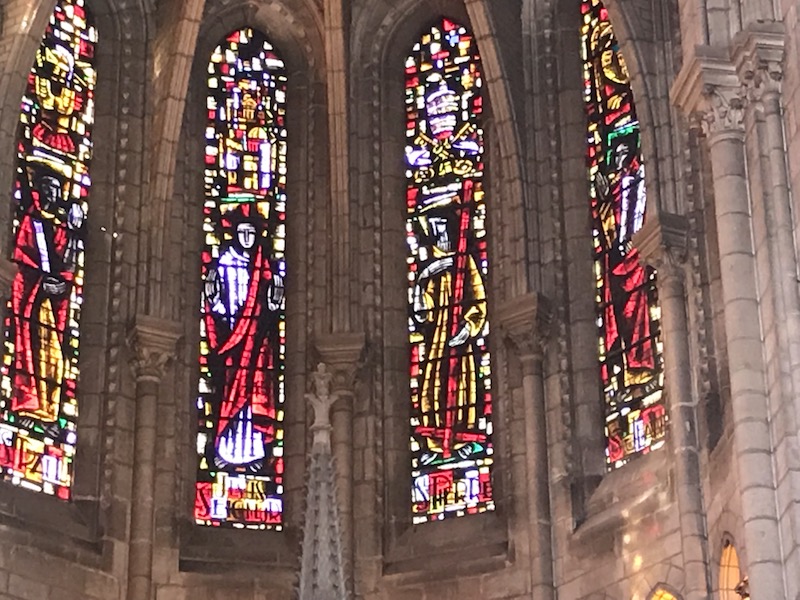
The high altar, while not being overly decorated, has a very unique design with the high pinnacle.
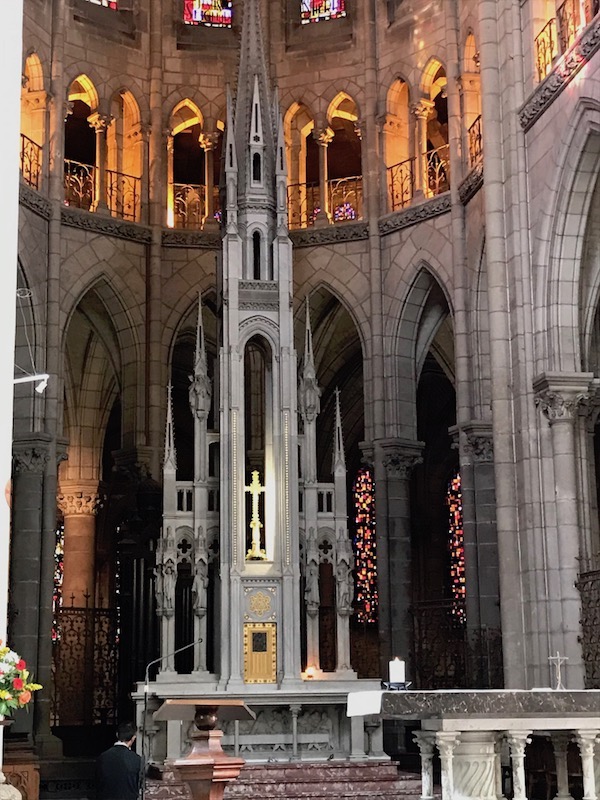
Chapel of the Virgin Mary has 3 stained glass windows, also from 1960.
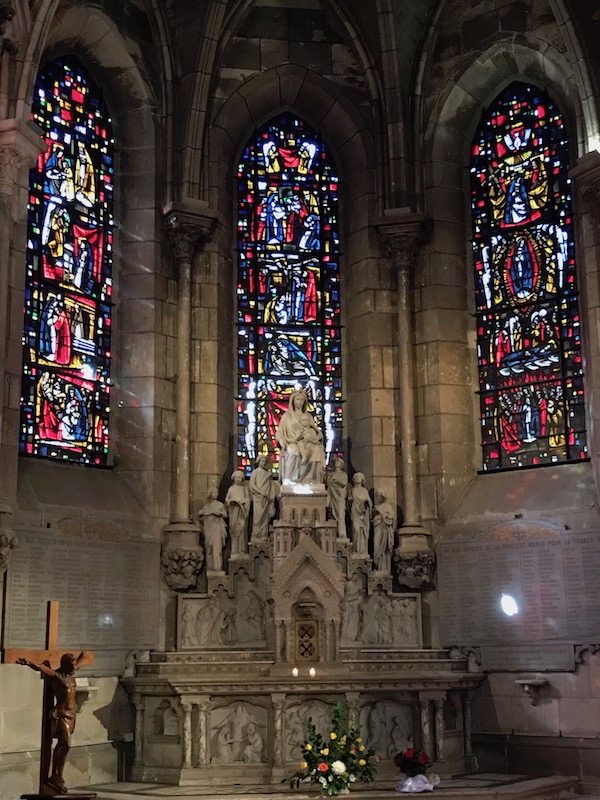
This is the fountain in Place Royale, which symbolizes the river and maritime vocation of Nantes on 3 levels. The city of Nantes is represented by the white marble statue of a crowned woman holding a trident. She is Amphitrite, goddess of the sea and wife of Poseidon. Below are various statues (in bronze) representing the Loire River and 4 tributaries (Erdre, Sèvre, Cher, and Loiret), as well as industries and commerce.


Erected in 1843, Passage Pommeraye is an elegant shopping gallery built on a steep slope that extends over three different levels. There is a central staircase, and is highly decorated with statues and carvings. It benefited from a renovation completed in 2015.
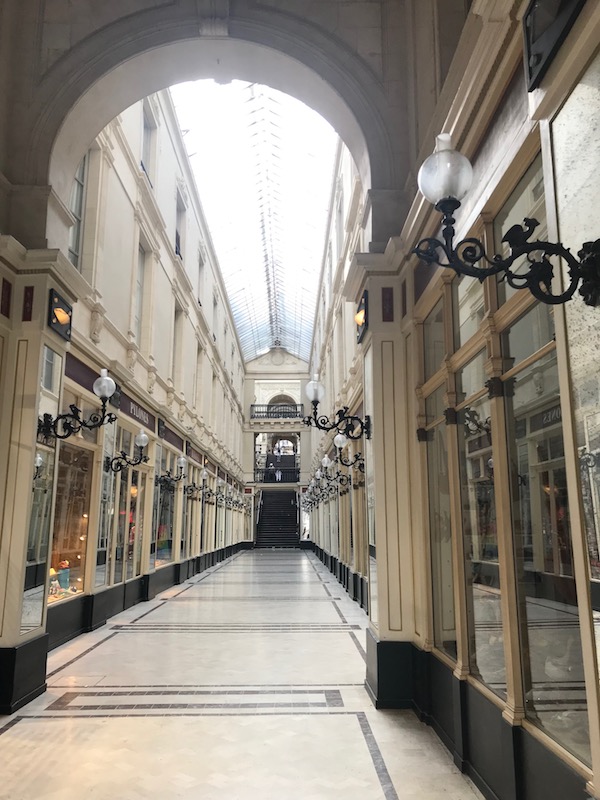



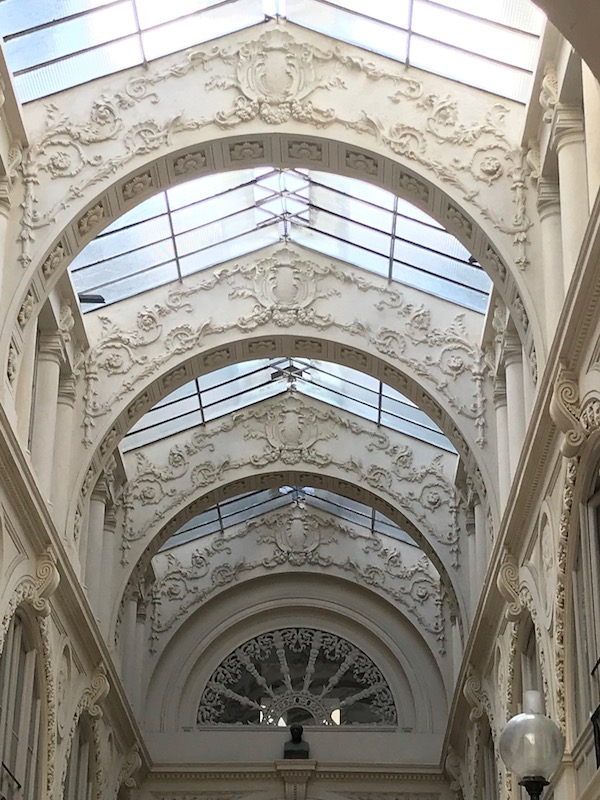
This theater with the new-style lights, Théâtre Graslin was built in an Italian style and inaugurated in 1788. It didn't last very long, as it was destroyed by fire in 1796 during a performance of the opera "Zémire and Azor". In 1808, Emperor Napoleon 1st visited the city and it was rebuilt in 1811. There are 8 Corinthian columns supporting a pediment, and 8 antique-style statues representing 8 of the 9 muses (one of them had to be left off to ensure harmony of the architectural ensemble). It is home to the Nantes Opera. The fountain and interesting modern-style candelabra lights were added in 2013.
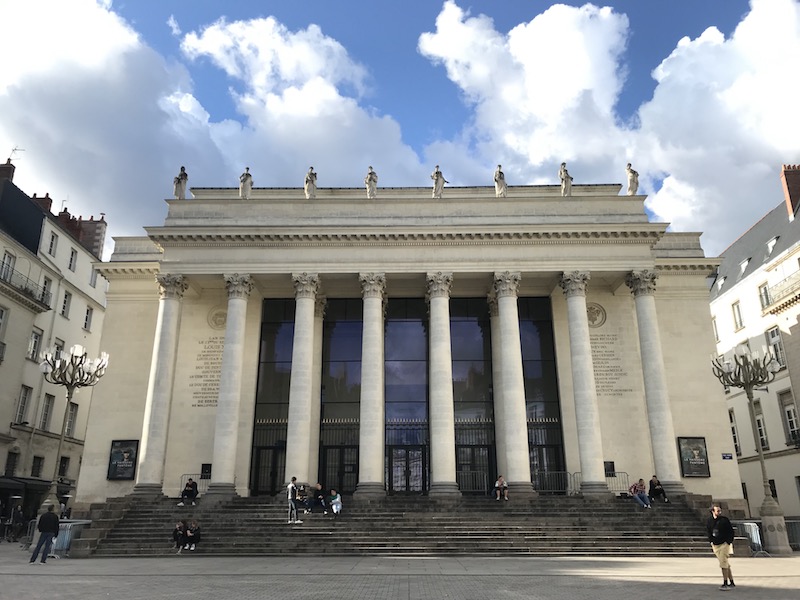

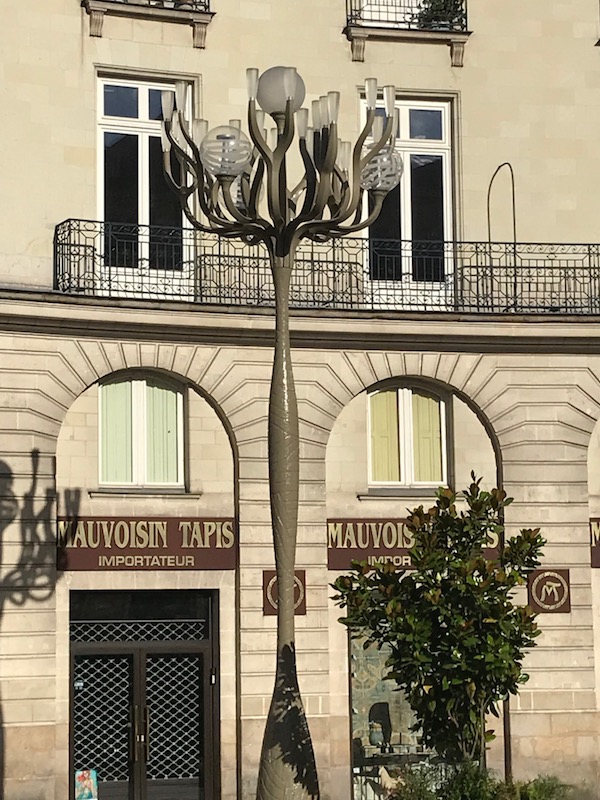
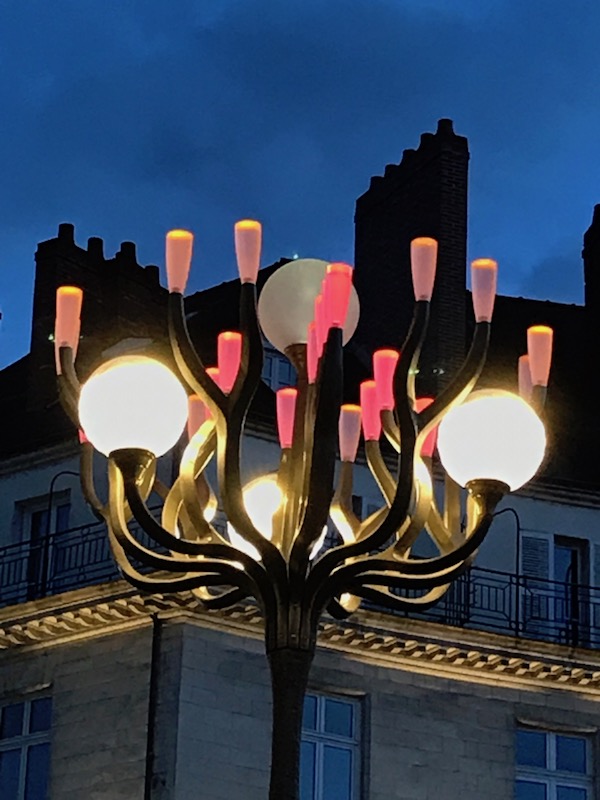
I don't normally put pictures of our restaurants on blogs, but La Cigale is different since it is actually a listed historical monument. It is a traditional French brasserie from the 19th century, constructed in 1895, with rather excessive Art Nouveau decor.
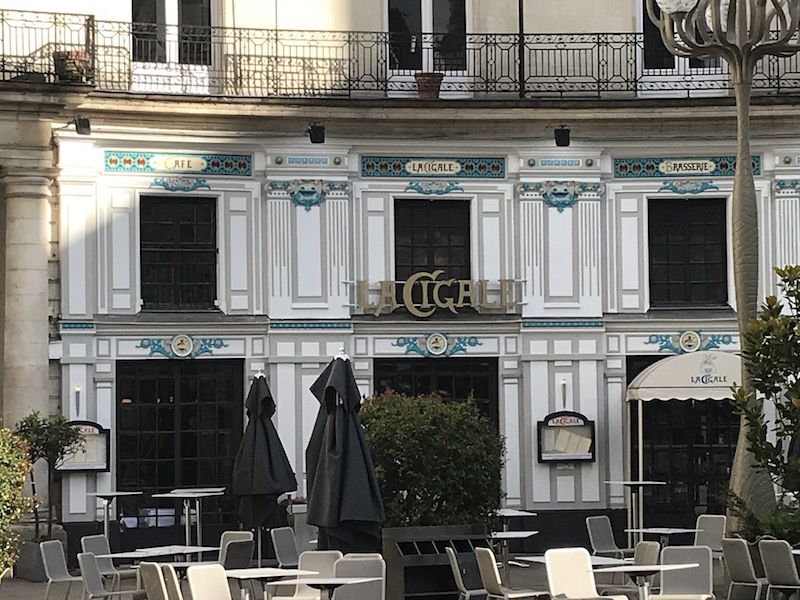
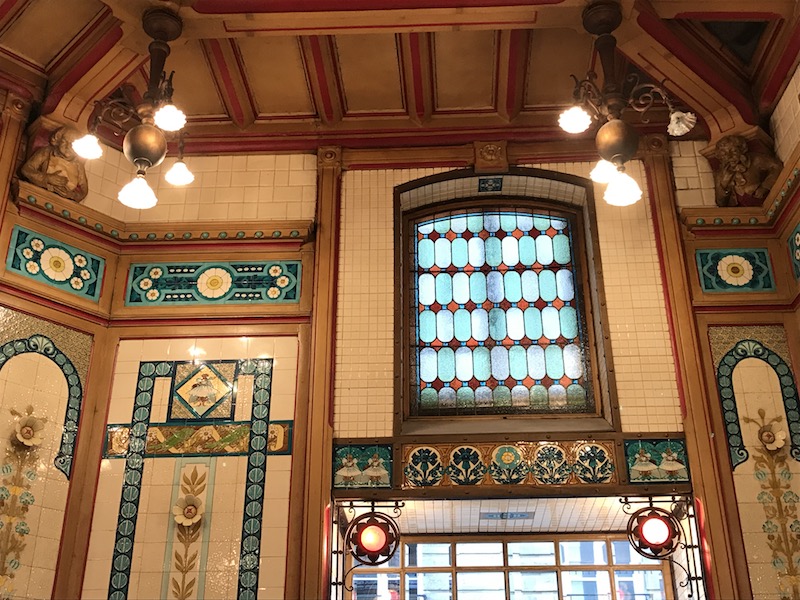
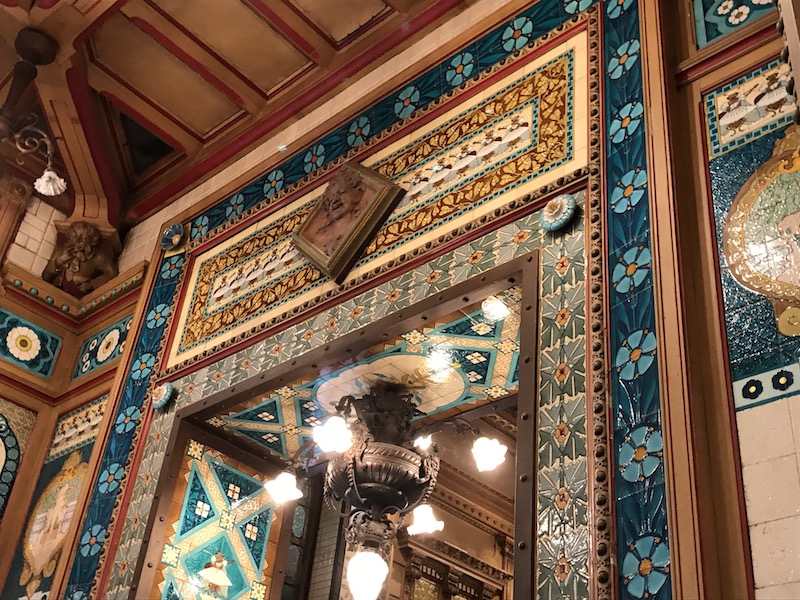

Nantes has several interesting parts of its history ... some good and some bad. The city developed quickly thanks to commercial trade dating back to the Middle Ages. Then, with the development of the colonial economy in the Caribbean, Nantes ended up in the middle of the slave trade triangle between Europe, Africa, and the new colonies. Between 1707 and 1711, 75% of slave ships left from Nantes. It declined starting in the 1720's when other French cities also got into the slave trade. Nantes would end up being the last stronghold of the slave trade, only ending in 1831. The city has opened the Memorial to the Abolition of Slavery on the waterfront including glass blocks in the walkway with the names of the slave ships that left from here.


Ateliers et Chantiers de la Loire was a French shipbuilding company that was formed in 1881 in Nantes and lasted through the late 19th and early 20th centuries.
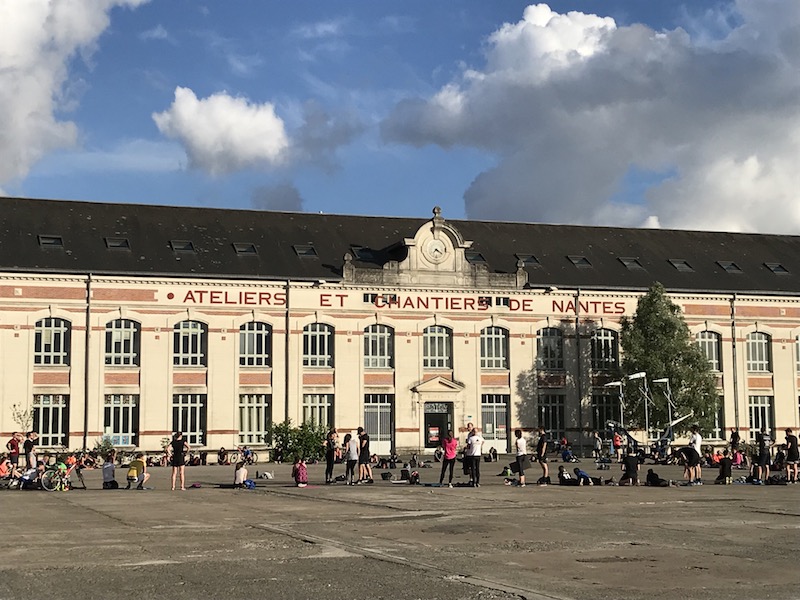
Here you can see Porte Saint-Pierre with the cathedral in background. It is the best preserved vestige of the ramparts of the city, and dates from the 15th century although the foundations actually date back to the Gallo-Roman time in the 3rd century. In the early 16th century, the local bishop decided to build a home over the door, which is why the top looks like a house. Supposedly, King Henry IV used this door to enter the city in 1598 to come and sign the Edict of Nantes.


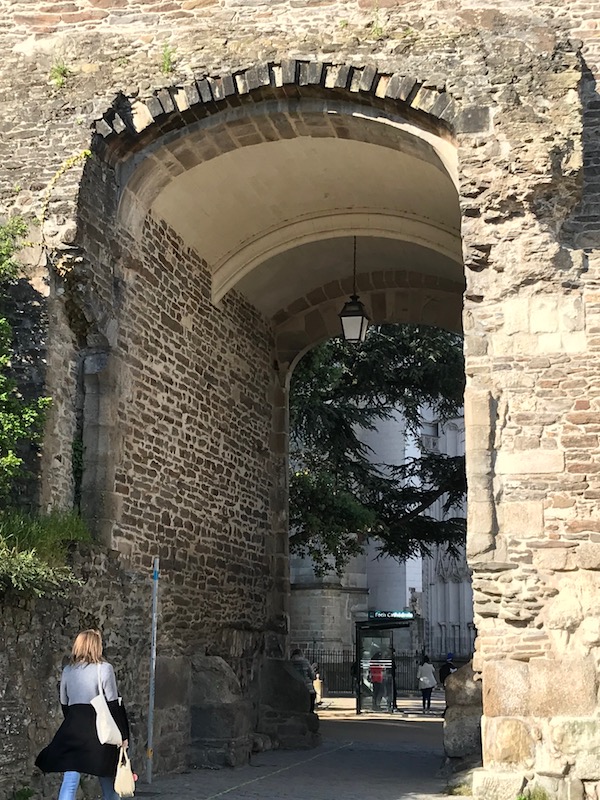
Here you can see the Gallo-Roman foundations, which are the arches of the old drawbridge over the moat.

Église Sainte-Croix, the Church of the Holy Cross, was built in the 17th century with a neo-Classical façade but a flamboyant Gothic nave and choir. The clock tower was added in 1860.
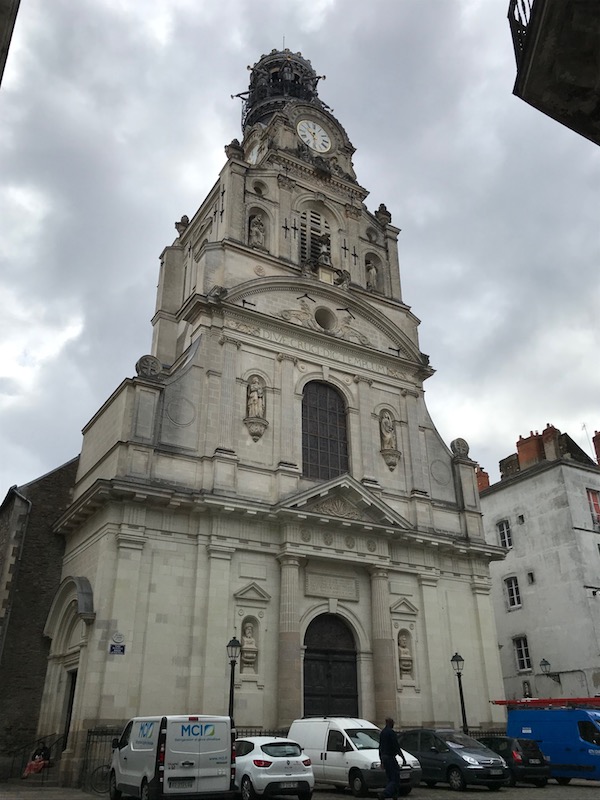

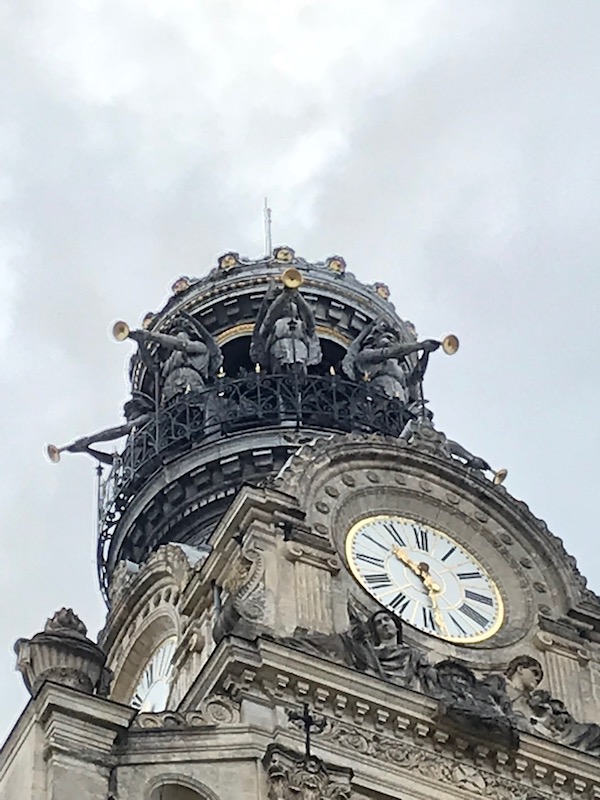
Église Saint-Clément is relatively new, being finished in 1875 in neo-Gothic style. I don't have a lot of detail, and it actually looks very similar to the Cathedral including the high nave and somewhat of a gallery up at the top. It has some nice stained glass, which seemed to be from the 19th century, and carved statues around the bottom of the pulpit.
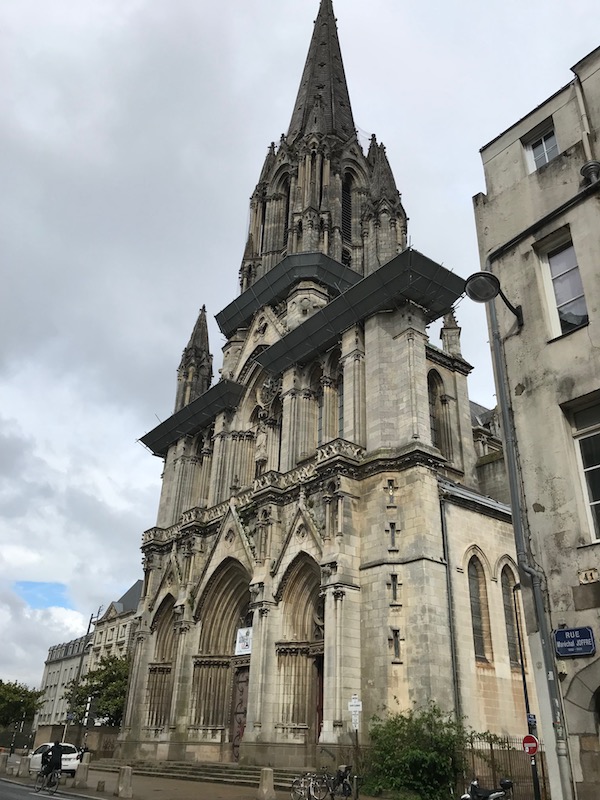
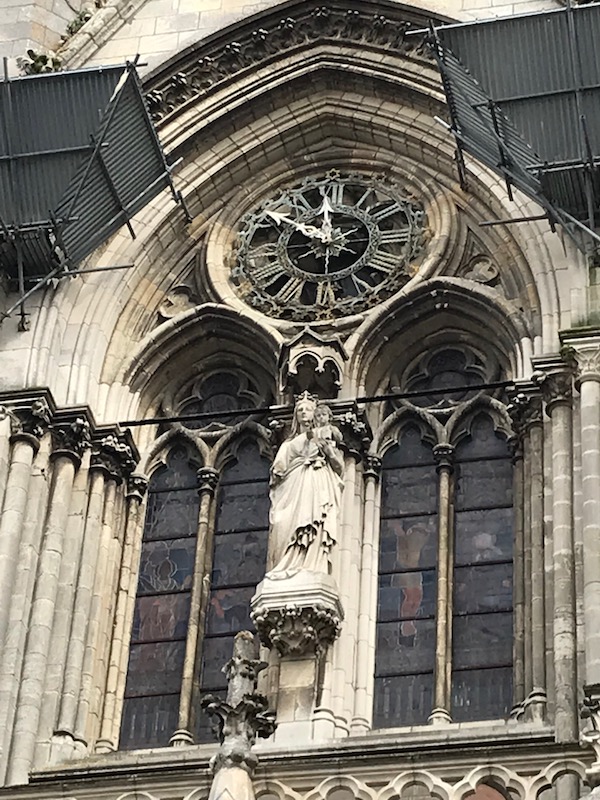


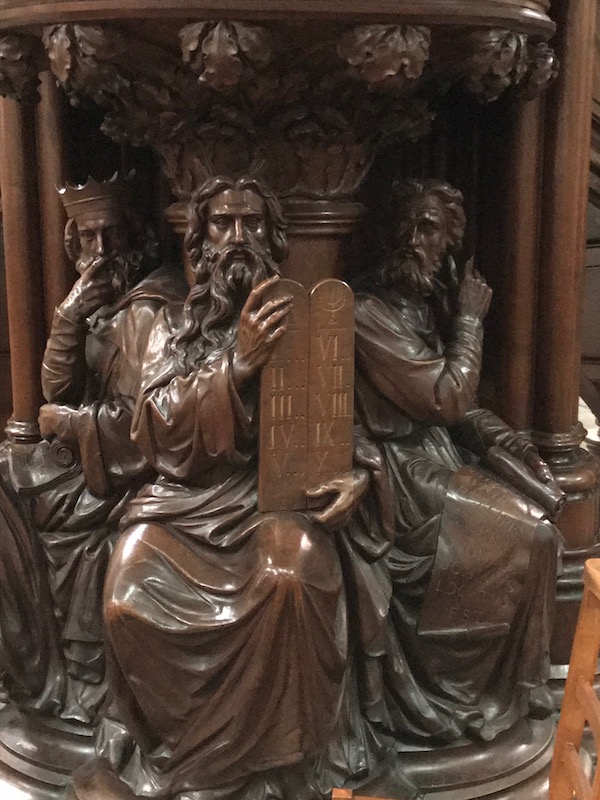
The Chateau des Ducs de Bretagne was the residence of the Dukes of Brittany between the 13th and 16th centuries, subsequently becoming the Breton residence of the French Monarchy. It is a moated fortress with over 1500 feet of curtain walls with seven towers, all linked by a sentry walkway. The coats of arms were also added by Anne of Brittany.
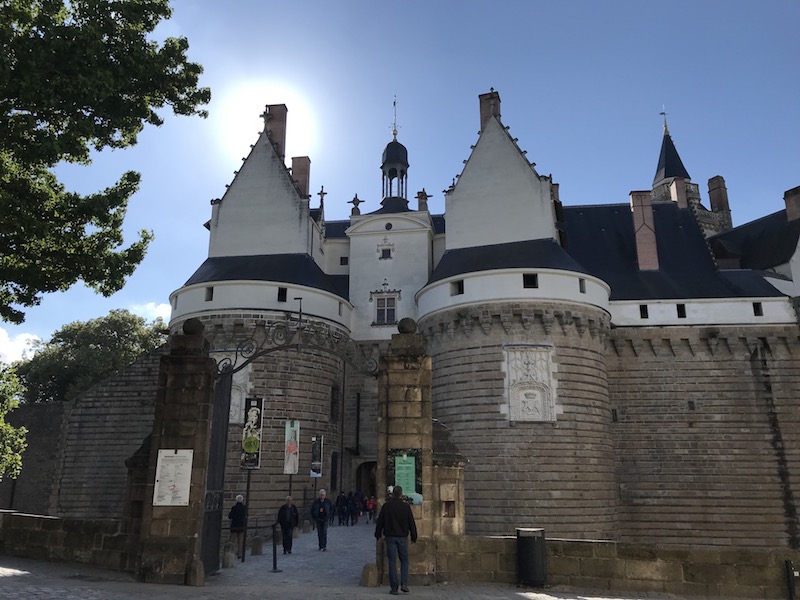
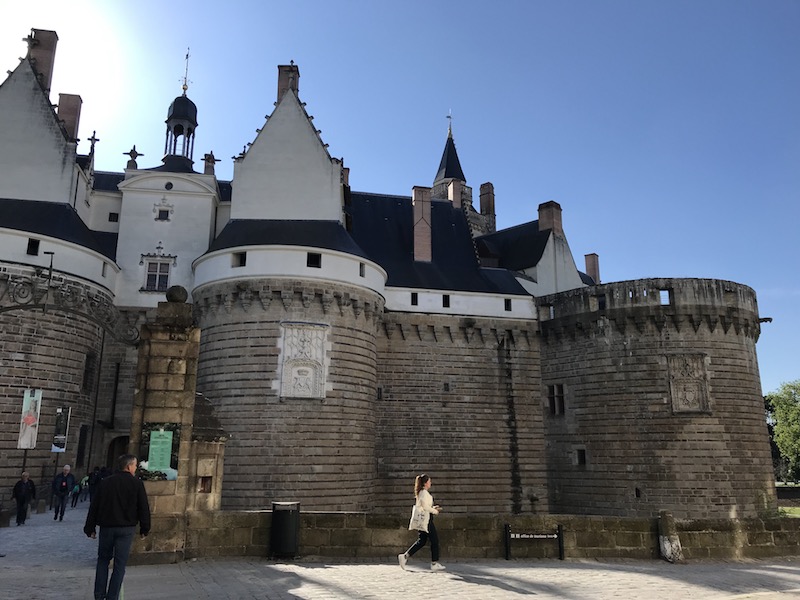
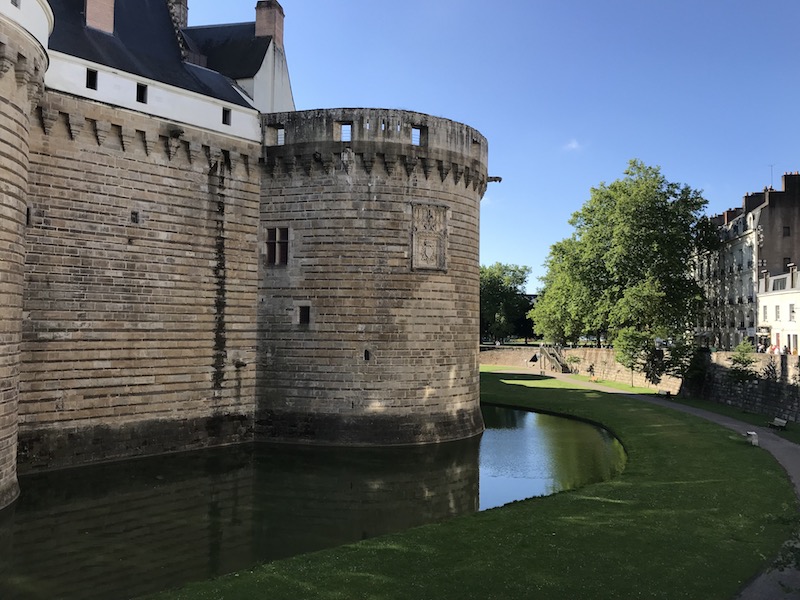

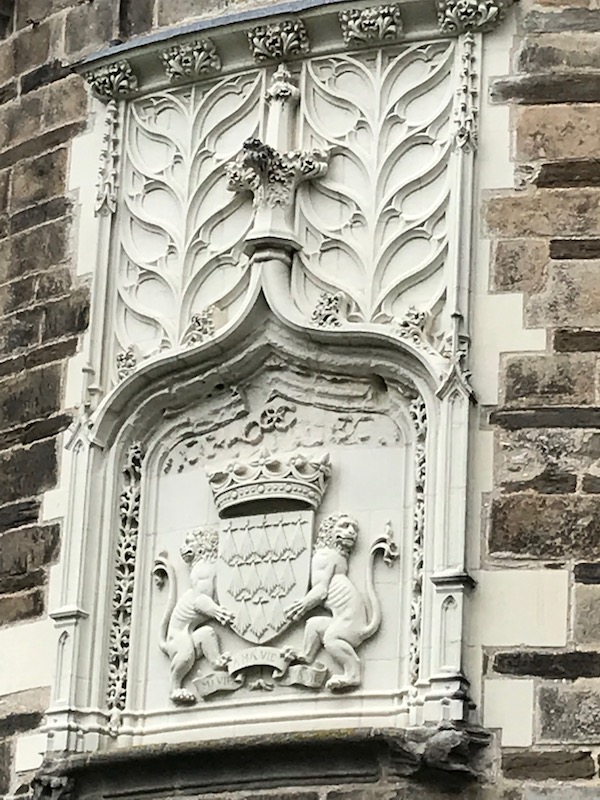
The inner courtyard is large with several buildings including a 15th-century flamboyant Gothic-style Ducal Palace built by François II and then remodeled with a more Renaissance inspiration by his daughter, Anne of Brittany (twice Queen of France through her marriages to Charles VIII and Louis XII). After going through the Porte Saint-Pierre, Henri IV came here to sign the Edict of Nantes advocating religious tolerance. We walked through the main palace but it has been converted into a museum that doesn't really cover the palace itself (hence no pictures).

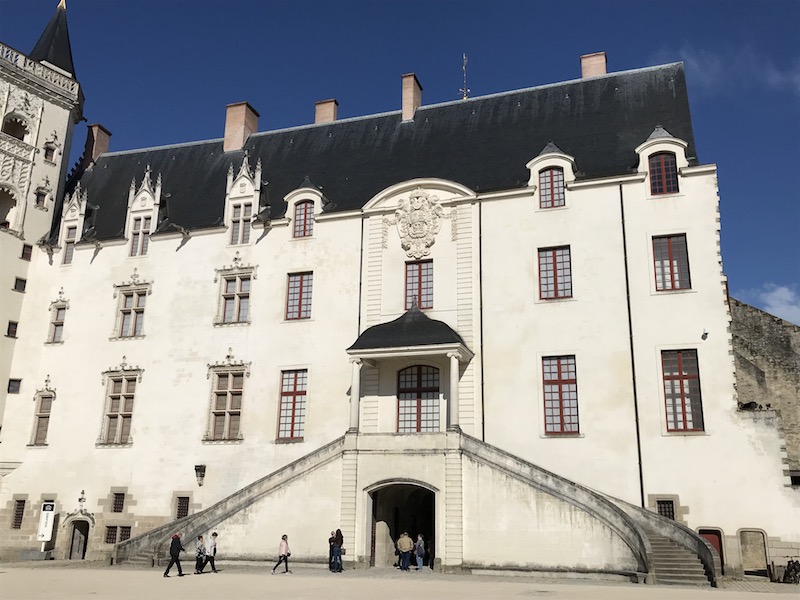
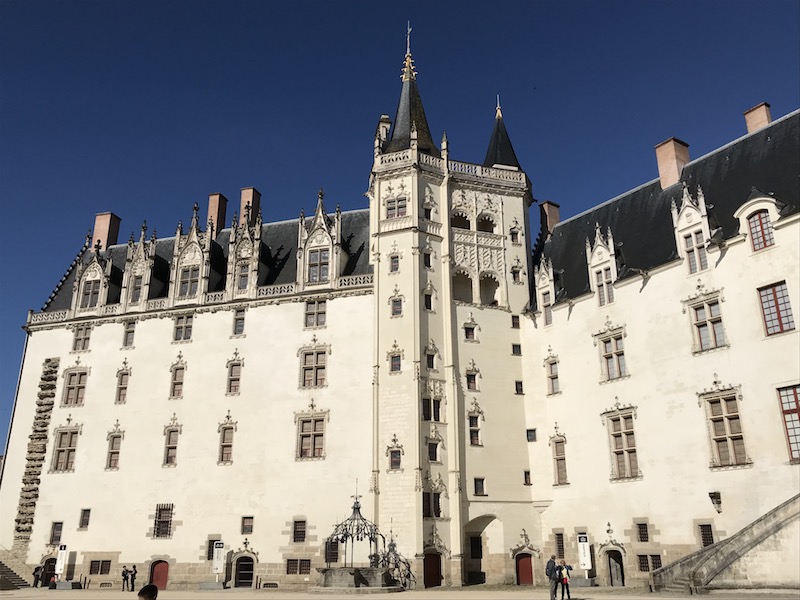

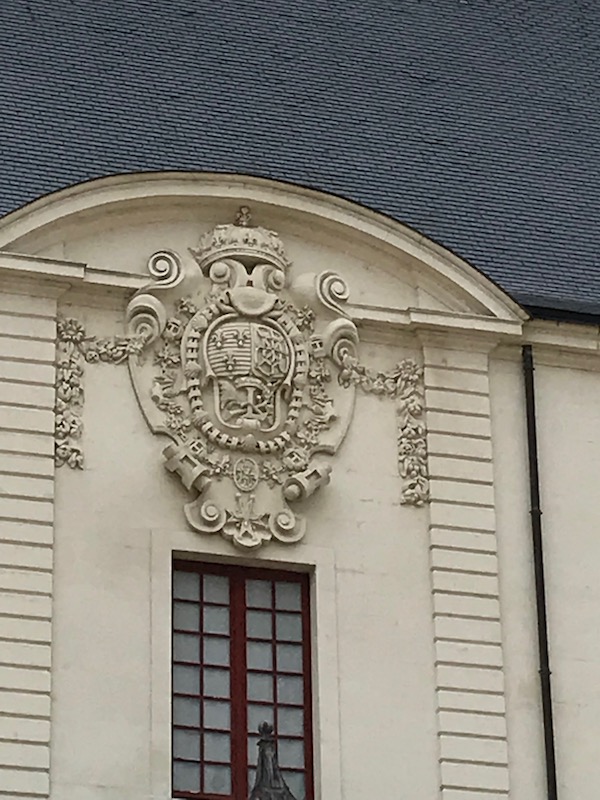

The company Lefèvre-Utile (known today just as LU) was created in 1846 to make biscuits (what we would call cookies but flat and crunchy). They still are a huge company today, I think #1 in France. They have lots of artistic advertising, including these that were on tiles. The LU factories are a symbol of the city, specifically what is called the LU Tower. The factory is no longer there, but one of the two original towers was spared from demolition. The tile advertisements for LU biscuits are displayed in the museum at the Chateau.
